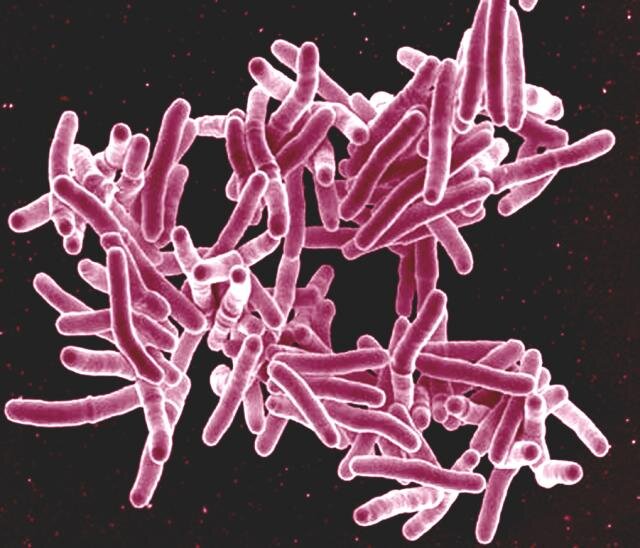Study identifies potential novel drug to treat tuberculosis

A new study published in Microbiology Spectrum demonstrates that a novel semi-synthetic compound can be derived from natural compounds to produce potent activity against Mycobacterium tuberculosis, including multi-drug resistant strains. The new compound provides a promising chemical scaffold to develop new potent anti-tuberculosis drugs.
M. tuberculosis, the pathogen responsible for tuberculosis (TB), is the leading cause of bacterial disease-related death worldwide. Current antibiotic regimens for the treatment of TB are dated, require longer courses of treatment and risk the development of drug-resistance.
In the new study, researchers conducted a search for novel antibiotics targeting M. tuberculosis that could also be effective against drug-resistant strains. In drug discovery, a valuable place to start looking for new antibiotics is within the world of natural compounds produced by organisms such as plants, fungi and bacteria.
Sanguinarine, a natural compound with known antimicrobial properties, is extracted from an herbaceous flowering plant native to North America. Sanguinarine has been used in traditional and alternative medicine for animals, but its toxicity makes it unfit to be used as a drug in humans.
The researchers redesigned sanguinarine using principles of medicinal chemistry to produce a more potent antibacterial compound with reduced toxicity. In studies in test tubes and in mice, the improved version of sanguinarine, called BPD-9, was capable of killing strains of M. tuberculosis that are resistant to all front-line antibiotics used in clinics to treat TB.
Moreover, BPD-9 was effective against non-replicating (dormant) and intracellular M. tuberculosis, which are two key aspects that limit the effectiveness of current anti-TB drugs. The researchers also found that BPD-9 was only active against pathogenic bacteria from the same genus as M. tuberculosis, which may spare the microbiome and other beneficial bacteria that most antibiotics harm.
“Our findings show a new chemical entity that has unique properties in combating Mycobacterium tuberculosis, which may be harnessed further for clinical translation,” said corresponding study author Jim Sun, Ph.D., Assistant Professor in the Department of Microbiology and Immunology at The University of British Columbia.
“Our finding that the new compound is effective against other members of the Mycobacterium genus may also prove to be valuable in the fight against deadly lung infections caused by non-tuberculous mycobacteria, which are notoriously resistant to most antibiotics. It is also enticing to speculate that BPD-9 could be killing Mycobacterium tuberculosis in a way that is different than that of existing anti-TB drugs.”
The study was conducted in collaboration with the medicinal chemistry team of Weibo Yang, Ph.D. at the Shanghai Institute of Materia Medica (Chinese Academy of Sciences) and the bacterial genetics team of Marcel Behr, M.D., and Andréanne Lupien, Ph.D. at McGill University.
More information:
Microbiology Spectrum (2024). DOI: 10.1128/aem.01480-24
Citation:
Study identifies potential novel drug to treat tuberculosis (2024, October 3)
retrieved 3 October 2024
from https://medicalxpress.com/news/2024-10-potential-drug-tuberculosis.html
This document is subject to copyright. Apart from any fair dealing for the purpose of private study or research, no
part may be reproduced without the written permission. The content is provided for information purposes only.








